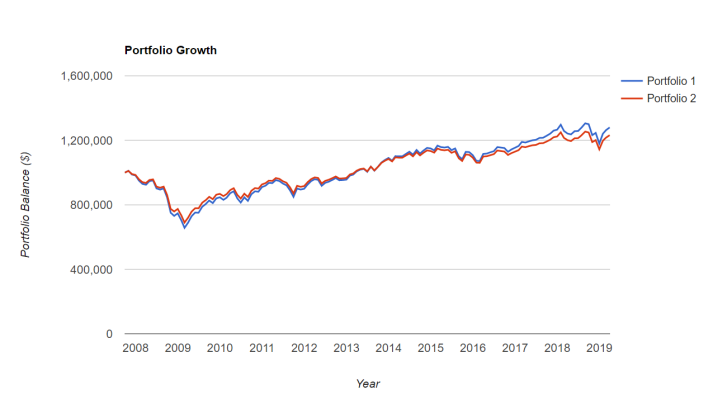pb4uski
Give me a museum and I'll fill it. (Picasso) Give me a forum ...
Like I said in post#48, if it works for you then good for you. There is no golden rule that says that it is a mortal sin to sell something at a loss, but since generally bonds zig when stocks zag then it is unlikely but if conditions require that something be sold at a loss, so be it.
I'm not sure that you understand what diversification is. VTSAX owns 3,615 different stocks. VBTLX owns 8,463 different bonds. That is diversification. Having another 8 funds isn't going to reduce diversification risk enough to justify the addition complexity.
Also, investment strategy after retirement is not significantly different than investment strategy before retirement. The only difference that we might agree on is a need for more liquidity since you don't have a steady, reliable income flowing in every week or two. As an example, look at the various Vanguard target date funds.. the same 4 funds whether you are currently retired or 10 or 20 or 30 years from retiring... just different allocations.... but in the 2020 fund they add a little liquidity. Fidelity does the same thing with about 6 funds. No need for 10 or more funds.
I guess I have more trust in Vanguard and Fidelity and the rest of the world that a simple portfolio is sufficient than SGOTI advocating complication.
I'm not sure that you understand what diversification is. VTSAX owns 3,615 different stocks. VBTLX owns 8,463 different bonds. That is diversification. Having another 8 funds isn't going to reduce diversification risk enough to justify the addition complexity.
Also, investment strategy after retirement is not significantly different than investment strategy before retirement. The only difference that we might agree on is a need for more liquidity since you don't have a steady, reliable income flowing in every week or two. As an example, look at the various Vanguard target date funds.. the same 4 funds whether you are currently retired or 10 or 20 or 30 years from retiring... just different allocations.... but in the 2020 fund they add a little liquidity. Fidelity does the same thing with about 6 funds. No need for 10 or more funds.
I guess I have more trust in Vanguard and Fidelity and the rest of the world that a simple portfolio is sufficient than SGOTI advocating complication.
Last edited:


 ....but there are folks here with $5-10m portfolios that have simple portfolios... so I hope the view is good from your high horse under that big hat.
....but there are folks here with $5-10m portfolios that have simple portfolios... so I hope the view is good from your high horse under that big hat.